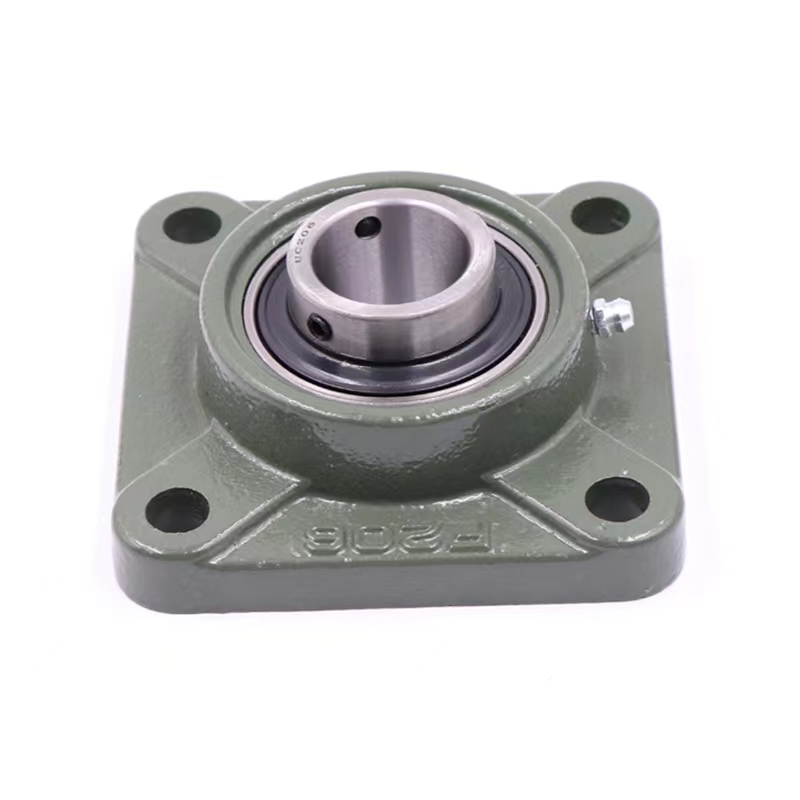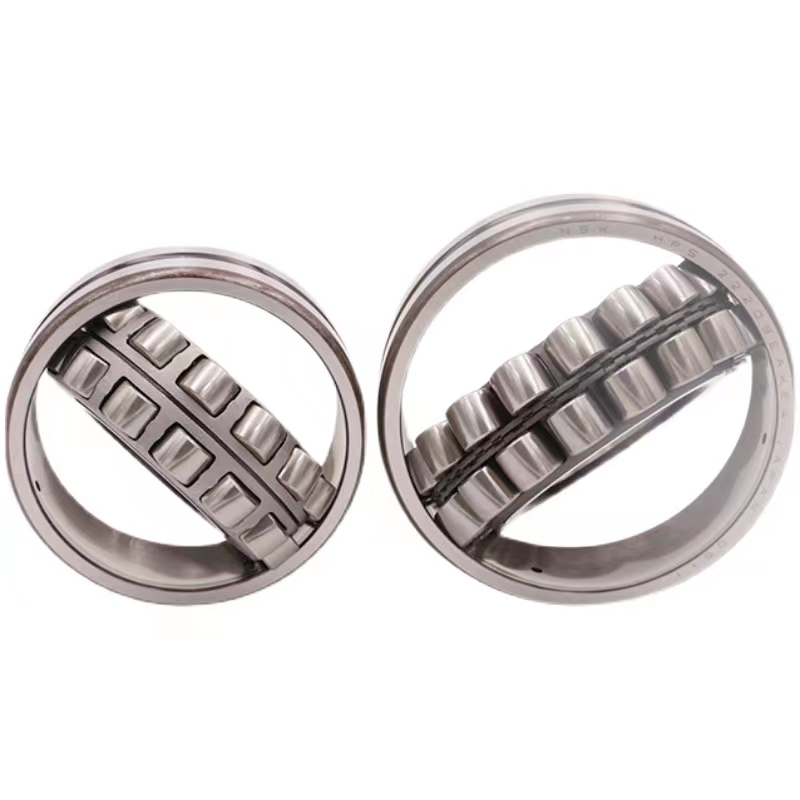By lan Stewart, Rubix UK Bearing Product Manager...
As with any product, you want your bearings to be up to the highest quality as well as durable. Critical to this is the need to select the correct bearing for the application but to maximise their life expectancy your product must also be correctly fitted, lubricated and maintained; failure to do so may result in early bearing failure. Pillow Block Bearing Ucfl204 Supplier

Here, with SKF, we identify the most common causes of bearing failure, along with the symptoms to look out for and tips on how you can prevent premature failure.
One of the most common causes of premature bearing failure is contamination, such as airborne dust or dirt (with 14% accounting for other causes). Contamination can occur during improper storage and handling prior to or during mounting, as well as during operation, so it’s important that bearings are stored in a clean environment and not removed from packaging until ready to use.
The choice of bearings for heavily contaminated environments, or where contamination of the process is also an issue, is key. In these instances, focus on the design of the housing and the seals/sealing system. Bearing seals will prevent contaminants from entering the bearing unit, whilst keeping lubricants from leaking out. Specialist sealing solutions have also been developed for very heavily contaminated environments, such as SKF’s Three-Barrier Solution which consists of a sealed spherical roller bearing, bearing housing with seals and a biodegradable grease to act as a contamination barrier.
Applying the correct amount of lubrication, at the right time, is the next major consideration. Consider the use of automatic lubrication systems or opt for sealed, relubrication free bearings.
Premature bearing failure can often be caused by excessive loads. Failure of this sort can look similar to normal bearing fatigue (which accounts for 36% of bearing failures) with the main tell-tale signs including the deterioration of running surfaces of the inner ring, outer ring or rolling elements. To function in applications where heavy loads are the norm, you want a bearing that is both hard and tough. In the past, hardened steel did not have all the necessary properties to make it suitable for use, but new heat treatment processes have been developed to remedy this.
Also, consider both axial and radial loads when choosing your bearings. Depending on the application, there are various bearing types that can be chosen to accommodate both the radial and axial load requirements.
One of the more obvious symptoms of overheating includes the discolouration of the rings, rolling elements and cages, with colours normally changing from gold to blue. Overheating results in a loss in hardness, reducing the bearing capacity and leading to premature failure.
Main causes of overheating include insufficient cooling, incorrect radial internal clearance or inadequate or too much lubrication. Overheating can also be caused by the bearing being overloaded. Where possible, consider installing adequate thermal controls and reassess the bearings being used are adequate to accommodate the application, lubricant, and load requirements. SKF, for example, have a range of bearings designed to operate at high temperatures.
Up to 36% of bearings fail prematurely due to inadequate lubrication.
The wear of the bearing raceways often exhibits a mirror-like appearance as opposed to wear to ingress of contamination where the raceways have a dull grey appearance
One of the main signs of lubricant failure begins with the discoloured (blue/brown) raceway and rolling elements. This will often be followed by excessive wear of rolling elements, ring and cages resulting in overheating. This type of failure is typically caused by excessive or too little of the correct lubrication, possible restricted lubricant flow and/or excessive temperatures. To combat this consider investing in a bearing that has built-in lubrication as part of its design. In addition, inadequate lubrication can be monitored at an early stage with basic condition monitoring equipment using a parameter such as gE or acceleration enveloping.
Corrosion can result from exposing a bearing to a corrosive fluid or atmosphere, with symptoms including discolouration on raceways, cages and rolling elements. To ensure best practice, divert corrosive fluids away from any bearing area if possible and/or consider using a sealed or housed bearing. SKF for example can offer various corrosion resistant bearings, such as stainless steel or with special coatings along the housings made from polypropylene composites.
Correct alignment of belt drives and shaft drive systems is increasingly important in an environment where machine performance and maintenance costs are key considerations. Misalignment can result in unnecessary forces being applied to the machinery leading to increased wear and vibration causing premature bearing failure and costly machine downtime. Sometimes caused by a loose-fitting bearing, misalignment can be typically observed by its uneven running paths. As the bearings rotate, the rolling elements generate a wear path on the inner and outer raceways. A well-aligned bearing will exhibit a running path down the centre of the inner and outer rings, whereas with a misaligned bearing this isn’t the case.
However, there are several products in the market that will accommodate some degree of misalignment without it impacting bearing performance. Depending on the application, these include: Spherical roller bearings, SKF CARB Toroidal roller bearings, self-aligning roller bearings, SKF Cooper bearing and housed bearing units. However, it is important to have the bearings as accurately aligned as possible. To help with this alignment, tools are available for aligning pulleys and couplings.
Approximately 16% of bearings fail prematurely due to damage caused by the incorrect mounting technique for the application and bearing type so correct fitting and removal of bearings is vital to achieve best performance.
It is essential that bearings are fitted correctly. Firstly, it is important not to fit bearings to seating’s which have been damaged by previous bearing failure. It is equally as important to ensure seating’s are of the correct specification, as this is a common cause of bearing failure. To help ensure correct fitting, there are various special kits which ensure that the fitting force is applied to the proper part of the bearing during the fitting process. Induction heaters will allow the bearing to be heated uniformly in a controlled manner, allowing the bearing to be fitted with minimum force. Puller kits also allow the old bearings to be removed without causing any damage to the bearings or shafts, or housings. These products help avoid unnecessary damage at the beginning of a bearings life in application and help it achieve its maximum life.
Rubix is Europe’s leading authorised bearings distributor.
uk.rubix.com/supplier/skf
With market-leading print and digital platforms for the Recycling, Quarrying, and Bulk Material Handling Industries we provide a comprehensive, and virtually unique route to market. Our bi-monthly magazine is available in print or electronic mediums delivering the latest news on new product launches, and industry projects directly to individually addressed on-site locations throughout the UK & Northern Ireland. Such is the demand we enjoy a regular pass-on readership of 2.5 providing a total of in excess of 15,000 regular readers of the magazine.
We work closely with companies to provide on-site editorials focusing on their clients feedback. All wrapped up with on-site recorded interviews, professional photography, delivering dynamic stories and images that enhance the stories. We also attend open days & events and promote these by writing engaging editorial pieces published in our magazine, website & e-newsletter. Let HUB-4 distribute magazines at your open day and we'll promote your event for you in the news and events section of our website prior to the event.
Our bi-monthly magazine is sent directly to 6,000+ quarries, recycling sites and bulk handling plants, with a pass-on rate of 2.5 giving an estimated readership of 15,000 throughout the UK.

Slingshot Ball Bearings Supplier © 2023 HUB Digital Media Ltd |Registered at Companies House, Company No: 5670516.